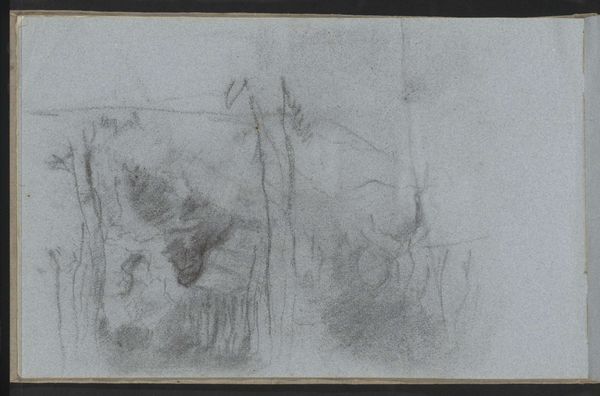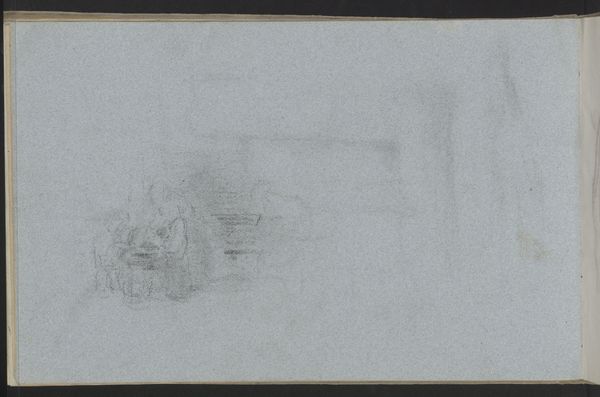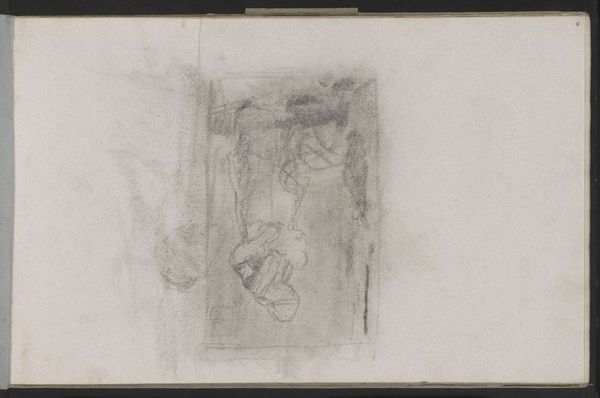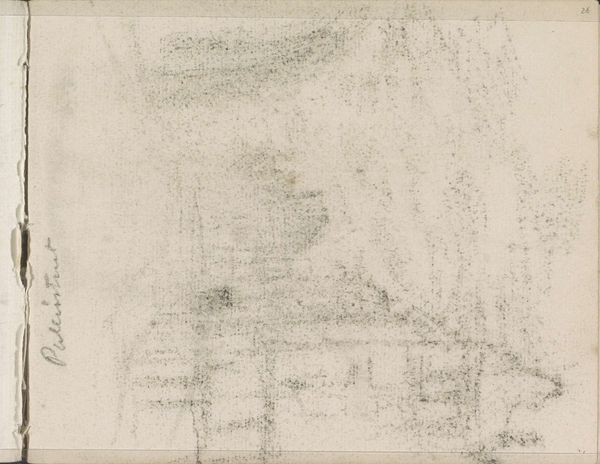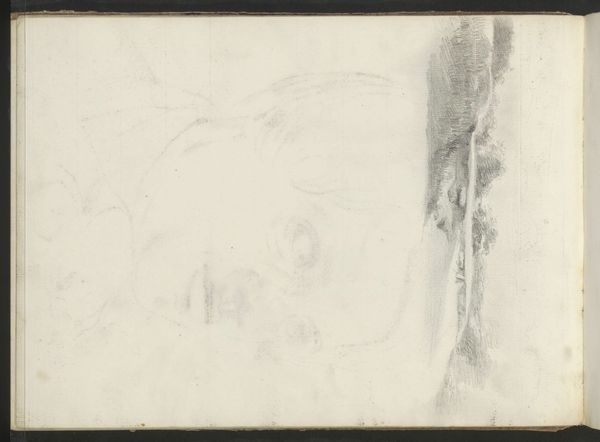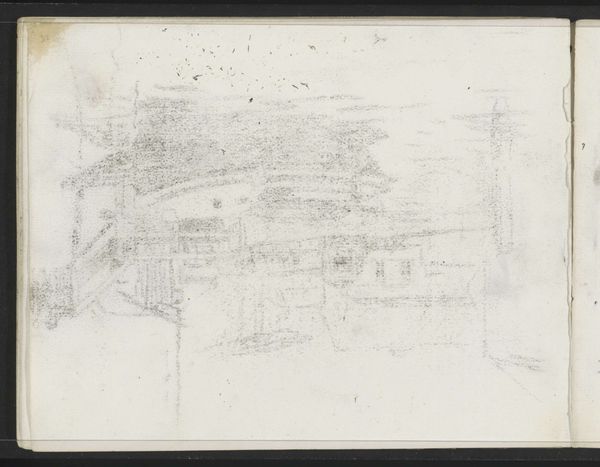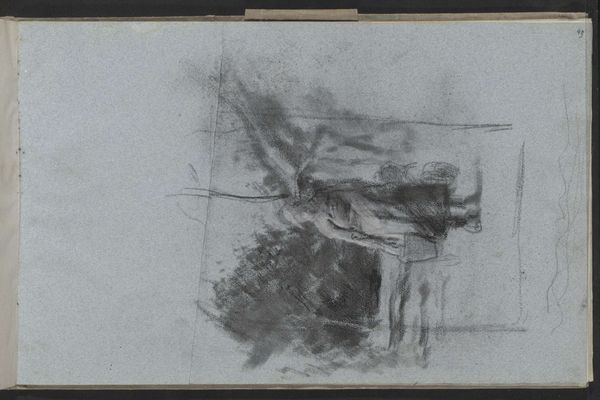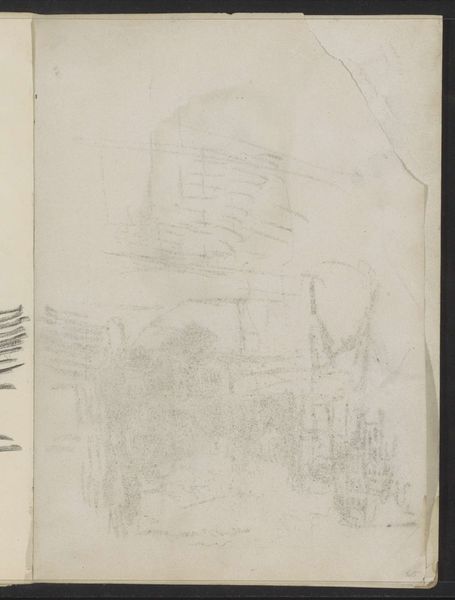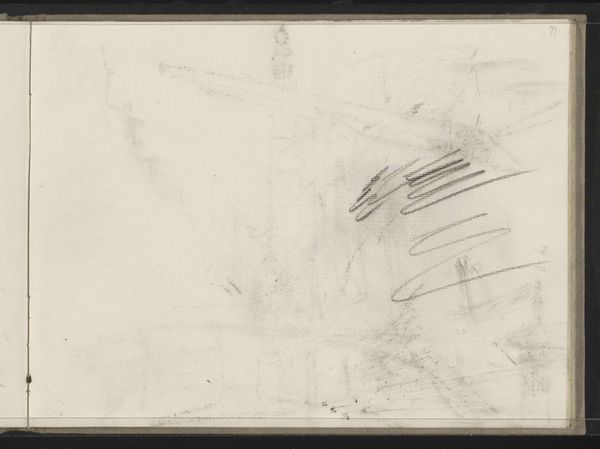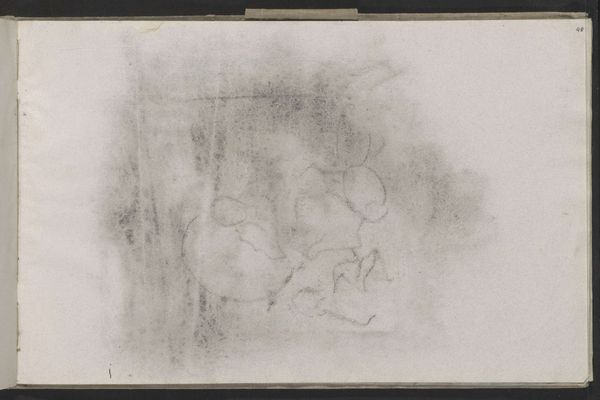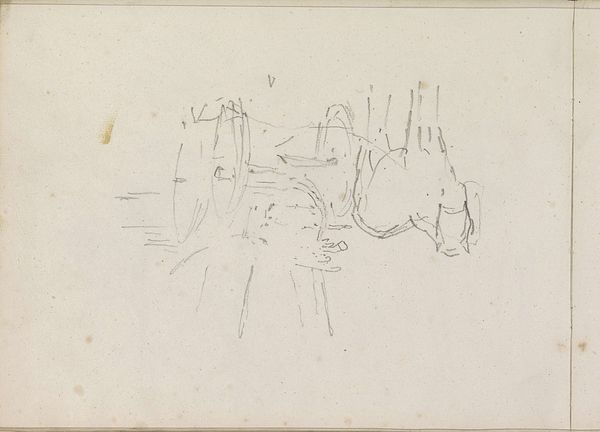
drawing, paper, pencil
#
drawing
#
impressionism
#
pencil sketch
#
landscape
#
paper
#
pencil
#
realism
Copyright: Rijks Museum: Open Domain
Curator: This is "Interieur," a pencil drawing on paper by Albert Neuhuys, dating from 1854 to 1914 and currently residing here at the Rijksmuseum. Editor: It strikes me as a ghostly, half-formed idea of a space. There's a deliberate incompleteness that’s quite evocative. Curator: It does capture a moment of potential. In considering Neuhuys, it's important to acknowledge his connection to the Laren School, reflecting the harsh realities of peasant life and labor—realities that often went unacknowledged. Editor: The landscape elements also draw my eye. Note how the soft gradations of the pencil work create a layered depth, especially given the lack of defined lines. How might you interpret this approach formally? Curator: I see a connection between the domestic space, implied within the interior, and the external, more visible landscape tradition. Considering issues of domesticity and rural life, how might we relate them to the gendered division of labor and societal expectations of the time? Were there expectations tied to "woman’s work," like those captured by Millet? Editor: Perhaps that association taints my interpretation. Though seemingly unintentional, the tonal contrasts establish a dynamic balance within the composition itself. The semiotic play contributes meaningfully. Curator: These compositions are never devoid of a viewpoint. Considering its materiality - humble paper, and pencil - the social hierarchies of the time period are inescapable: who possessed the time to create versus toil endlessly. Editor: True, though those very tools facilitate the execution of visual language in its most pure state. A line, a tone, shadow... Curator: For me, beyond the composition's artistic success is how a work portrays social conditions. That shapes its impact across time. Editor: And, perhaps through attention to formal structures and visual language, a sensitivity toward the lived experience can emerge. Curator: Precisely. There is space for dialogue in appreciating this quiet moment from history. Editor: I concur entirely; there is something wonderfully fundamental here.
Comments
No comments
Be the first to comment and join the conversation on the ultimate creative platform.

